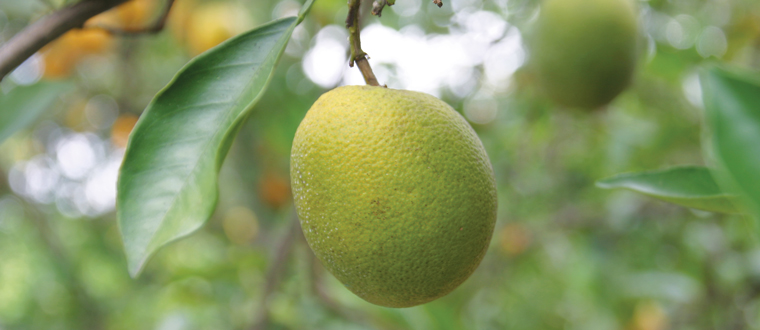While a commercially available cure for crop-killing citrus greening remains elusive, University of Florida researchers have developed a tool to help growers combat the insidious disease: an efficient, inexpensive and easy-to-use sensor that can quickly detect whether a tree has been infected.
That early warning could give growers enough lead time to destroy plagued trees and save the rest.
“The current ground inspection is very time-consuming, subjective and labor- intensive, and also requires a lab analysis of leaf samples,” said Daniel Lee, a UF professor of agriculture and biological engineering who developed the sensor. “Our real-time, in-field detection system can provide objective, fast and accurate results of the disease detection.”
Scientists have been unable to find a cure for citrus greening because infected plants are difficult to maintain, regenerate and study. But in the development of the sensor, UF researchers relied on the fact that citrus greening causes leaves to store high levels of starch that can rotate the direction of reflected light from its original orientation.
In 95 to 98 percent of laboratory and field tests, the sensor accurately detected the signs of citrus greening: leaves with veins and splotches that appear a pale shade of gray on the sensor’s images, an obvious contrast to the dark-gray image of healthy leaves.
IFAS researchers used 10 high-powered LEDs and an inexpensive camera to assemble the sensor for a cost of less than $1,000, making it affordable for even small citrus growers, although commercial availability depends on finding a sponsor, Lee said.
Citrus greening, also known as HLB or “yellow dragon disease,” begins when a tiny sap-sucking insect deposits bacteria on the leaf of a healthy fruit tree. The bacteria invade the tree and starve it of nutrients, causing its fruit to be shrunken and misshapen with a thick, pale peel that remains green at the bottom. Most trees afflicted with citrus greening die within a few years. In Florida, greening is a major reason commercial citrus acreage decreased by 28 percent from 2004 to 2011.
Source:
- Wonsuk “Daniel” Lee, wslee@ufl.edu

